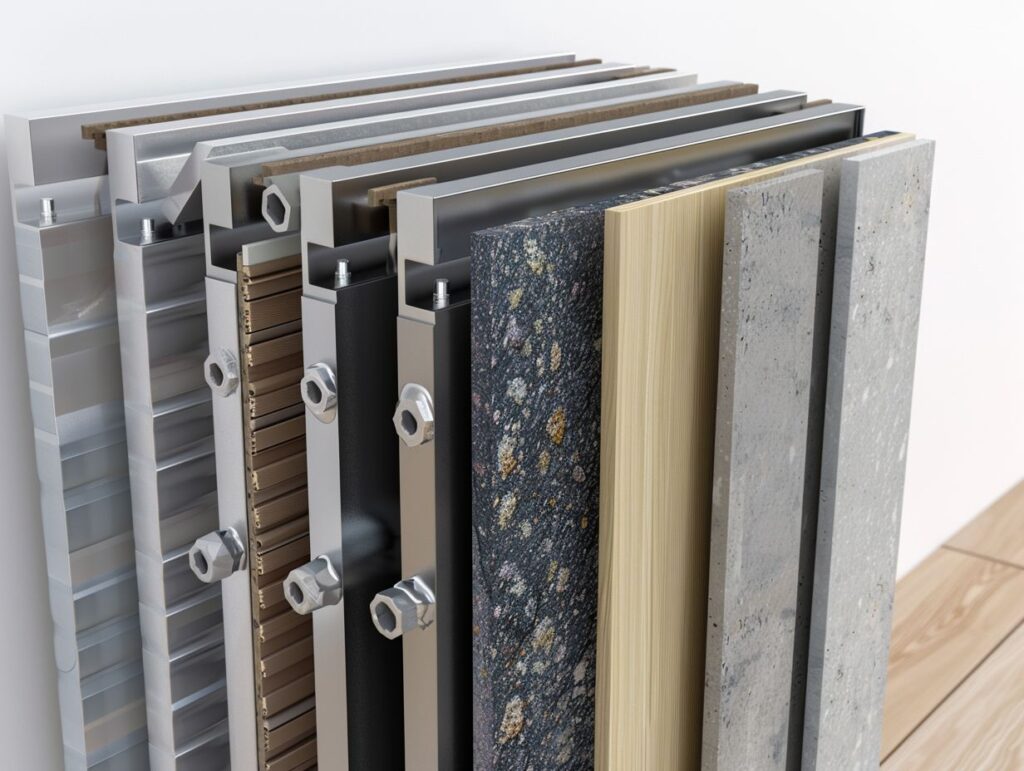In radiator construction, the selection of materials is a critical factor that influences the efficiency and longevity of the unit. The common materials utilised in radiator construction, such as aluminium, steel, cast iron, and copper, are examined to identify their respective advantages and disadvantages.
Additionally, we delve into advanced materials like carbon fibre and graphene, which are reshaping radiator design. When deciding on a radiator, factors to take into account include budget constraints and personal preferences.
Key Takeaways:
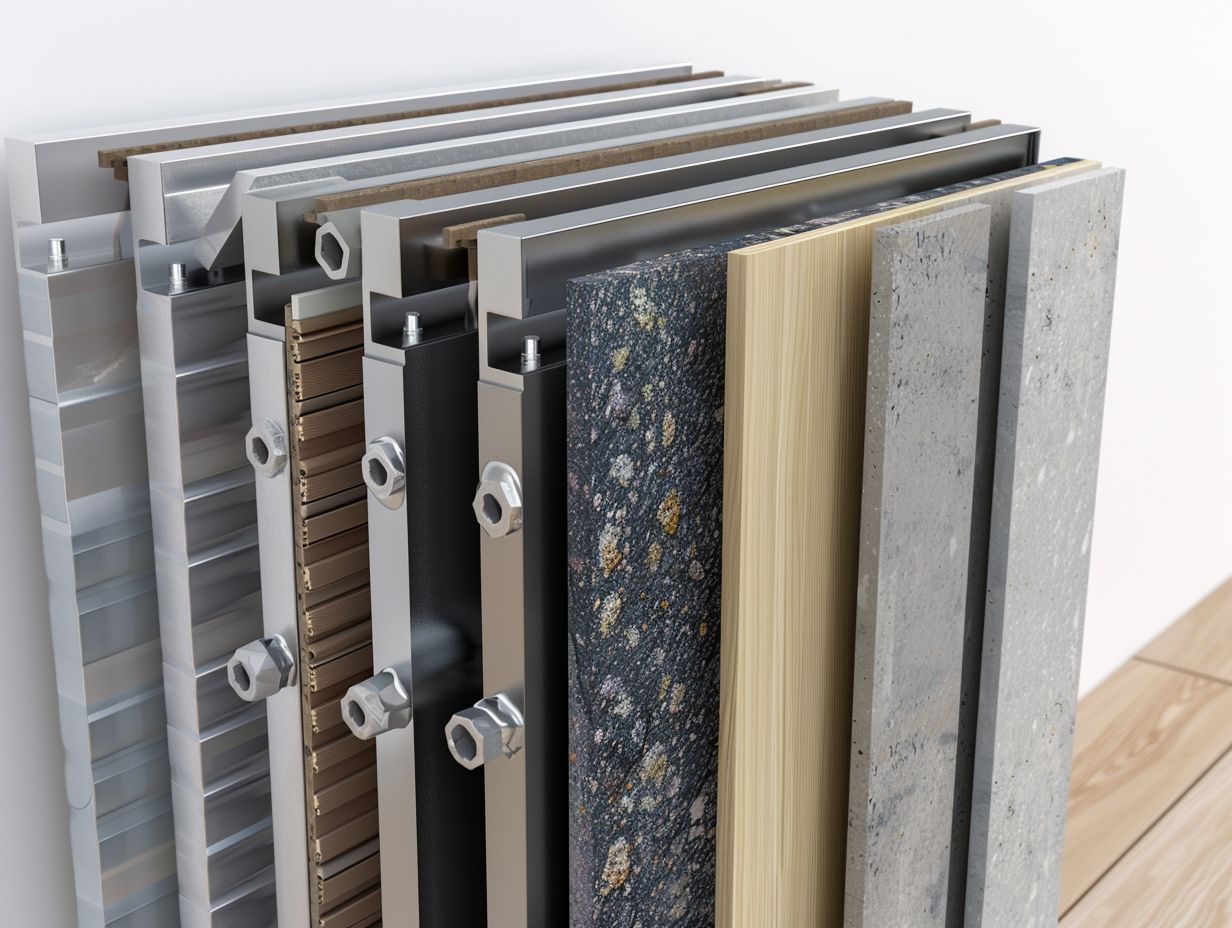
- Aluminum, steel, cast iron, and copper are commonly used materials in contemporary radiator construction due to their durability and thermal conductivity.
- Each material has its own benefits and drawbacks, such as aluminum being lightweight and efficient, while cast iron is heavy and has a longer lifespan.
- Innovative materials like carbon fiber and graphene are being used in radiator construction for their superior thermal properties, but they may come at a higher cost.
Common Materials Used in Radiator Construction
Radiators are typically constructed using a variety of materials, with cast iron, steel, and aluminium being some of the most commonly utilised options. Each material presents unique advantages in terms of efficiency and durability, which play a significant role in shaping the overall performance of the radiator.
Aluminium
You prefer aluminium radiators for their lightweight properties, excellent heat conduction capabilities, and contemporary design selections. These radiators are adept at efficiently heating areas while offering a modern and stylish appearance.
Their rapid heat dispersion throughout a room is a significant benefit, ensuring a comfortable environment in a timeframe much shorter than that of traditional radiators.
The lightness of aluminium radiators makes installation easier and allows for more flexibility in terms of positioning within a space, improving overall convenience for homeowners.
The modern design choices offered in aluminium radiators allow for a seamless integration with various interior styles, making them a functional and aesthetically pleasing addition to any room.
Steel
Steel radiators are recognised for their ability to provide long-term energy efficiency benefits and contribute to reducing operational costs in heating systems.
The exceptional durability of steel radiators ensures they have a longer lifespan compared to other materials, requiring minimal maintenance over time.
Their superior heat retention properties enable them to effectively hold heat for extended periods, ensuring rooms remain warm even after the heating system is turned off.
By evenly distributing heat throughout a space, steel radiators facilitate optimising heating systems, offering a reliable and robust solution that enhances overall energy efficiency.
Cast Iron
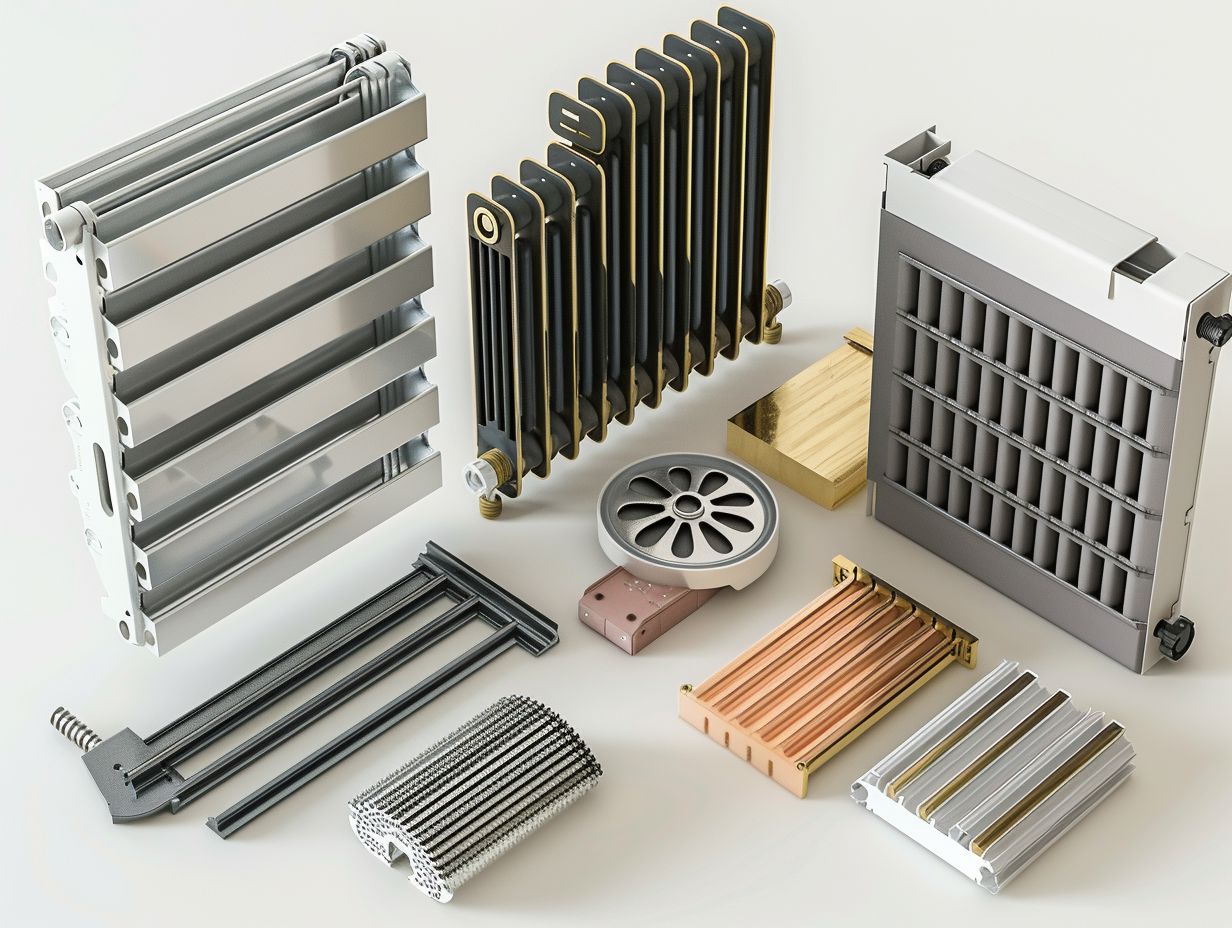
You appreciate cast iron radiators for their timeless design, exceptional heat retention capabilities, and efficient heat distribution. These radiators add a touch of elegance to spaces while providing consistent and effective heating.
Their classic design appeal is often considered a statement piece in both contemporary and traditional settings, seamlessly blending with various decor styles. The ability of cast iron radiators to retain heat for extended periods means they continue to emit warmth even after the heating system has been turned off, making them energy-efficient.
Their efficient heat distribution ensures that rooms are evenly heated, eliminating cold spots and creating a cosy atmosphere. Due to their versatility, cast iron radiators suit a wide range of property styles, from period homes to modern apartments, meeting diverse heating requirements with ease.
Copper
You appreciate copper radiators for their exceptional heat conductivity, corrosion resistance, and aesthetic appeal. These radiators efficiently distribute heat while adding a touch of sophistication to interior spaces.
The high heat conductivity of copper radiators allows them to quickly and effectively transfer warmth throughout a room, creating a comfortable and cosy environment. Along with their functionality, copper radiators are also known for their durability, making them a long-lasting heating solution that requires minimal maintenance.
Their timeless and elegant design effortlessly blends with various interior styles, elevating the overall look of a room while providing efficient heating performance. With copper radiators, you can enjoy a perfect balance of functionality and aesthetics in your living spaces.
Benefits and Drawbacks of Each Material
When selecting a radiator for specific heating needs, it is essential to consider the unique benefits and drawbacks of each material used in their construction.
Cast iron radiators are known for their durability and heat retention capabilities, making them a popular choice for their classic aesthetic appeal. However, they can be heavier and more challenging to install.
On the other hand, steel radiators are lightweight, efficient in heat transfer, and available in sleek designs, but they may require more maintenance to prevent corrosion.
Aluminium radiators offer quick heat distribution and corrosion resistance but are more prone to physical damage.
Copper radiators excel in heat conductivity and durability, although they are typically more expensive and require regular maintenance to prevent oxidation.
Understanding the characteristics of these materials is crucial for selecting the most suitable radiator based on your specific heating requirements.
Innovative Materials Used in Radiator Construction
The construction of radiators has advanced significantly due to the incorporation of innovative materials such as carbon fibre and graphene. These state-of-the-art materials offer improved heat efficiency, unique design possibilities, and a forward-thinking approach to the development of heating systems.
Not only do these cutting-edge materials possess superior heat conduction properties, but they also feature lightweight characteristics that enhance the efficiency and eco-friendliness of radiators.
By incorporating carbon fibre and graphene into the manufacturing of radiators, the industry can decrease energy consumption and contribute to a more sustainable future. These materials enable the creation of sleeker and more streamlined designs that have the potential to revolutionize the aesthetics of traditional heating systems, blending functionality with contemporary appeal.
Carbon Fibre
Carbon fibre radiators represent a significant advancement in heating technology, valued for their exceptional heat conductivity, lightweight structure, and modern design features. These radiators excel in heat distribution efficiency while incorporating sustainable characteristics.
Utilising carbon fibre in radiator construction offers a multitude of advantages. Its impressive heat conductivity ensures efficient and uniform heat dispersion throughout a space, enhancing comfort and reducing energy consumption.
The lightweight property of carbon fibre facilitates easier installation and transportation, making it a practical option for both residential and commercial purposes.
The design adaptability of carbon fibre allows for sleek, contemporary radiator styles that can harmonize with any interior aesthetic. By opting for carbon fibre radiators, not only do you meet contemporary heating needs, but you also contribute to environmental sustainability objectives through the utilization of a durable and eco-friendly material.
Graphene
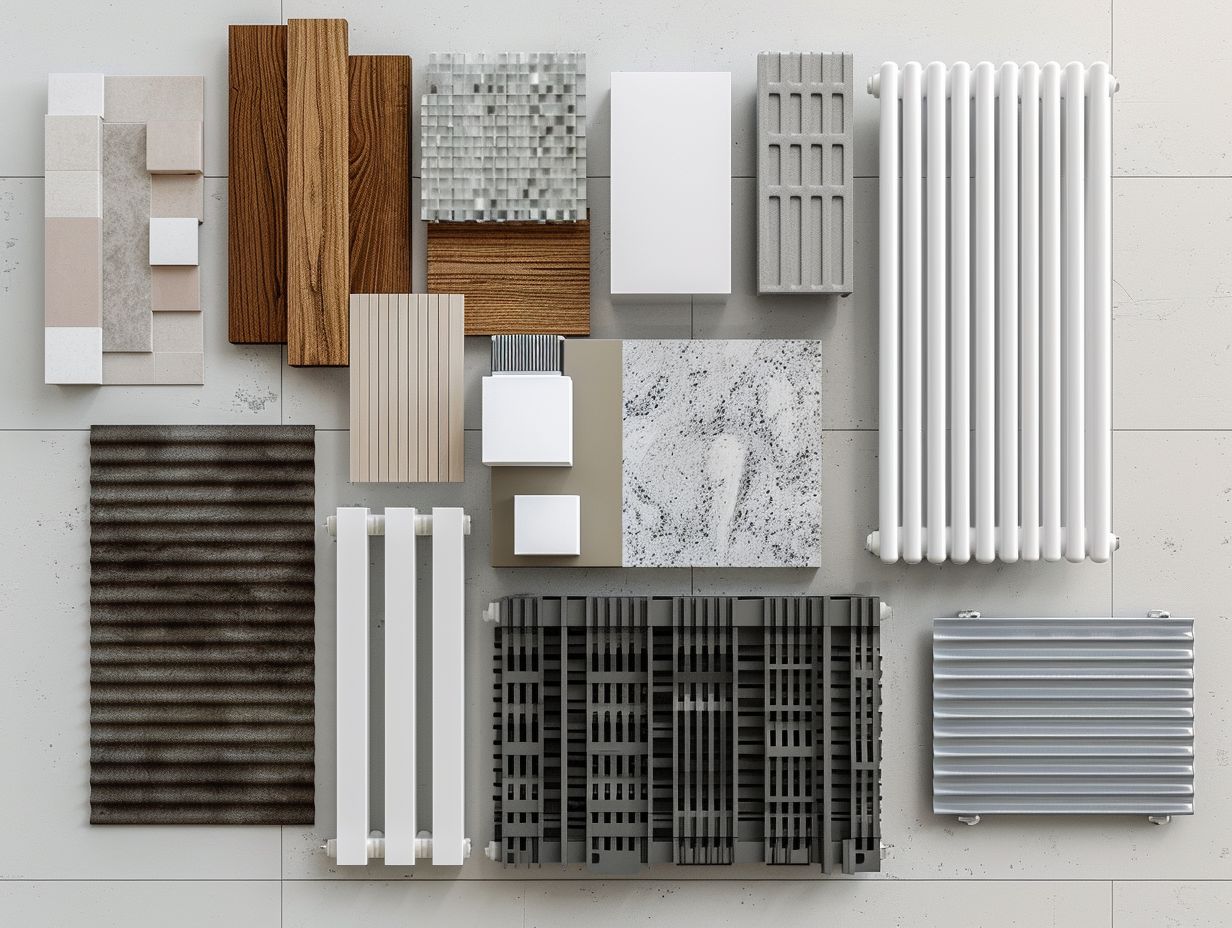
Graphene-based radiators introduce cutting-edge technology to heating systems, leveraging the exceptional thermal conductivity of graphene for superior heat distribution and energy efficiency. These radiators offer innovative design options while maximising heating performance.
The unique properties of graphene, such as its high thermal conductivity and strength, allow for rapid heat transfer and even distribution throughout a space. This not only ensures a comfortable and consistent heating experience but also leads to reduced energy consumption, ultimately making graphene radiators a sustainable heating solution.
By incorporating graphene into radiator design, there is a significant potential to revolutionize how heat is distributed in modern spaces, offering a more efficient and eco-friendly alternative to traditional heating systems.
Factors to Consider When Choosing a Radiator
When selecting the right radiator, you need to consider various factors such as budget constraints, personal design preferences, heating efficiency requirements, and compatibility with your existing heating system. These considerations are critical in ensuring optimal comfort and performance.
In terms of budget, it is important to keep in mind that investing in a high-quality radiator can lead to long-term cost savings due to improved energy efficiency.
Your design preferences should align with the overall aesthetics of your living space. Choose a radiator that not only enhances the visual appeal of the room but also effectively distributes heat.
Matching the heating capacity of the radiator with the specific requirements of the room is essential to achieving the desired level of warmth while seamlessly integrating with your current heating setup. This ensures that your heating system operates efficiently and effectively.
Budget and Personal Preferences
When you are selecting a radiator, it is essential to find a balance between budget constraints and personal design preferences. By evaluating the long-term energy efficiency benefits and running costs, you can make an informed decision that satisfies both financial considerations and aesthetic preferences.
Considering the lifecycle costs of various radiator models is crucial to ensure that the chosen option not only fits within the initial budget but also provides savings over time. Opting for energy-efficient radiators can lead to reduced utility bills and a more sustainable heating solution in the long term.
By combining these efficiency benefits with styles and sizes that complement the decor of the room, you can achieve a perfect blend of practicality and visual appeal, enhancing both the functionality and aesthetics of the space.
Efficiency and Durability
When evaluating radiators for a heating system, you should prioritize efficiency and durability as critical factors. Optimal efficiency is essential for effective heat distribution, ensuring that your heating system operates efficiently. Additionally, durability is key for long-term performance and energy savings in your heating setup.
Efficient radiators heat up quickly and maintain a consistent temperature, leading to reduced energy consumption and lower heating costs. On the other hand, durable radiators are less likely to malfunction and require fewer replacements, contributing to the longevity of your heating solution.
The relationship between efficient heat distribution and radiator durability plays a significant role in enhancing the overall energy efficiency of your heating system.
By selecting radiators that strike a balance between efficiency and durability, homeowners can establish a sustainable and cost-effective heating environment that meets their long-term needs.
Frequently Asked Questions
What materials are commonly used in contemporary radiator construction?
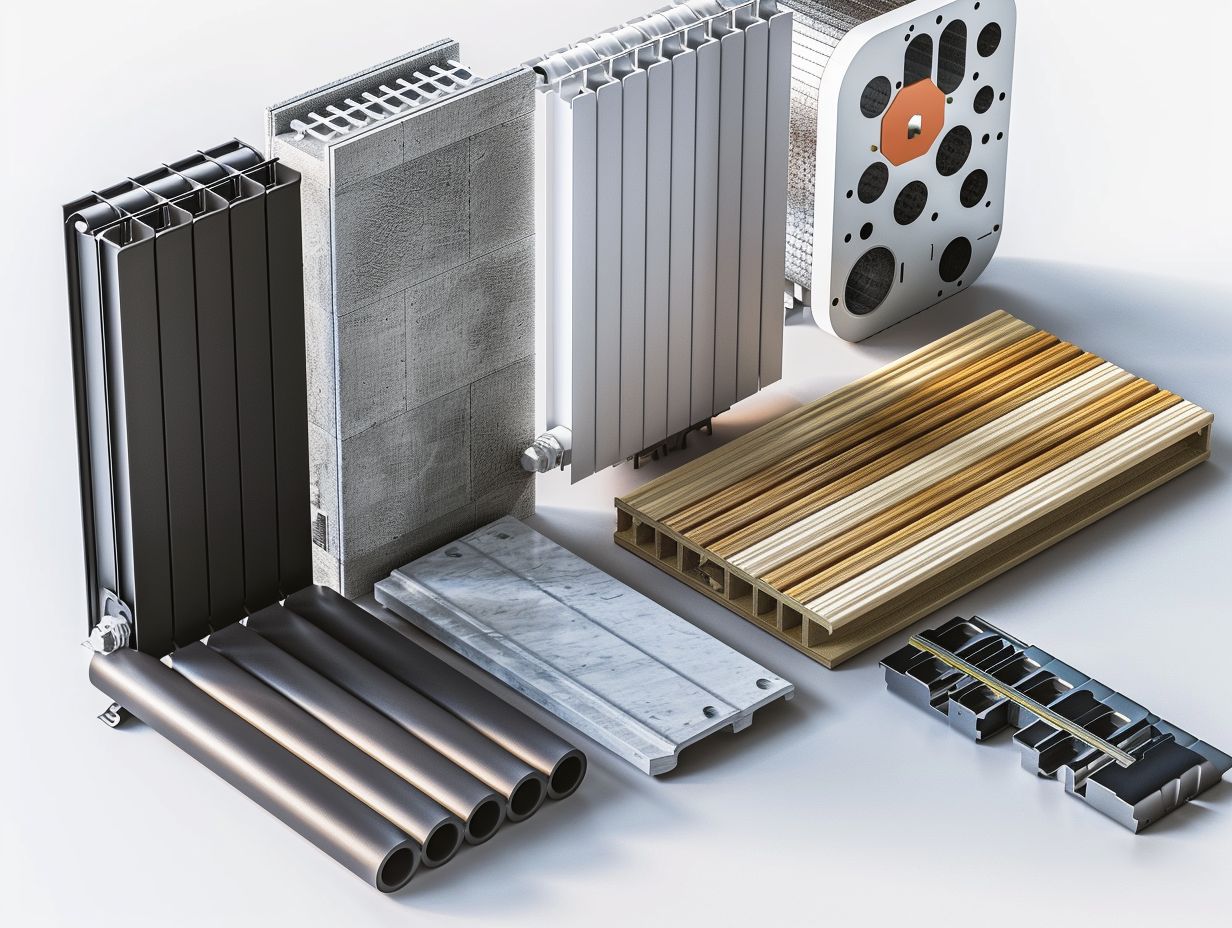
Common materials used in contemporary radiator construction include aluminium, steel, cast iron, copper, brass, and various types of plastics.
What are the benefits of using aluminium in radiator construction?
Aluminium is a lightweight and durable material that is highly efficient at transferring heat. It is also corrosion-resistant, making it suitable for use in wet environments.
Why is steel a popular choice for contemporary radiators?
Steel is a strong and sturdy material that can withstand high temperatures and pressure. It is also easily shaped, allowing for a variety of designs and styles in radiator construction.
Are there any advantages to using cast iron in radiator construction?
Cast iron is a traditional material that is known for its durability and heat retention capabilities. It is also able to withstand extreme temperatures without warping or cracking, making it a reliable choice for radiator construction.
What are the benefits of using copper in contemporary radiator construction?
Copper is a highly conductive material that is efficient at transferring heat. It is also malleable and corrosion-resistant, making it suitable for use in various radiator designs.
Why might brass be used in contemporary radiator construction?
Brass is a durable and corrosion-resistant material that is often used for decorative elements in radiator construction. It can also be an efficient conductor of heat, making it a popular choice in some designs.

